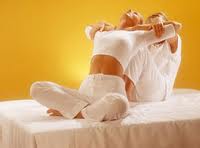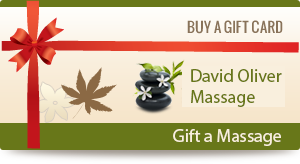What is Thai massage?
Thai massage was developed by Buddhist monks in Thailand as a healing modality 2,500 years ago. It made its way to Thailand, where the Ayurvedic techniques and principles gradually became influenced by traditional Chinese medicine. For centuries, Thai massage was performed by monks as one component of Thai medicine.
What does Thai massage feel like?
Thai massage uses passive stretching and gentle pressure along the body’s energy lines to increase flexibility, relieve muscle and joint tension and balance the body’s energy systems. Thai massage is both deeply relaxing and energizing. Thai massage is also called Thai yoga massage, because the therapist uses his or her hands, knees, legs, and feet to move you into a series of yoga-like stretches. Many people say Thai massage is like doing yoga without any work!
Muscle compression, joint mobilization, and acupressure are also used during treatment.
What should I expect during my visit?
Thai massage takes place on a futon mat on the floor, and you wear loose fitting clothing. We can provide you with a loose outfit to wear or just turn up wearing something loose and comfortable, like sweat pants.
No oil is applied.
You start by laying on your back, and the therapist uses gentle compression and stretching techniques to open up your body, beginning with your legs. Then the therapist uses a combination of gentle point pressure, a wide variety of yoga-like stretching, and passive joint movements, applied very slowly with gentle rocking and rhythmic compressions along your body’s natural energy lines called the Sen lines (see below for detailed explanation). Some people say Thai massage is a little like doing yoga without any effort, because the therapist will push your body into various positions without any work on your part.
Thai massage is done with all your clothes on, so some people recommend it if you feel uncomfortable with nudity during a Swedish massage .
The therapist literally uses his or her whole body, including feet, to move your body into various positions during Thai massage, so in some ways it feels more intimate than a Swedish massage, where you lay on a massage table and are covered with sheets.
A typical Thai massage is 60 minutes to 90 mins long.
What conditions is Thai massage used for?
Many people find that Thai massage has the following benefits:
• relaxes
• reduces stress
• improves circulation
• increases energy & promotes free flow of “life energy”
• increases flexibility
• improves range of motion
• centers the mind and body
* improves blood and lymph flow
* relieves muscle tension
* improves posture
* stimulates digestion and elimination
* strengthens the immune system
* enhances overall well-being
* creates more ‘space’ in the body
Precautions
Massage is not recommended for certain people:
• infectious skin disease, rash, or open wounds
• immediately after surgery
• immediately after chemotherapy or radiation, unless recommended by your doctor
• prone to blood clots. There is a risk of blood clots being dislodged. If you have heart disease, check with your doctor before having a massage
• pregnant women should check with their doctor first if they are considering getting a massage. Massage in pregnant women should be done by massage therapists who are certified in pregnancy massage.
• massage should not be done directly over bruises, inflamed skin, unhealed wounds, tumors, abdominal hernia, or areas of recent fractures.
Additional tips
• Don’t eat a heavy meal before the massage
• If it’s your first time at the clinic or spa, arrive at least 10 minutes early to complete the necessary forms. Otherwise, arrive 5 minutes early so you can have a few minutes to rest and relax before starting the massage.
• Be sure that your massage therapist has your complete health history, because people with certain conditions should not have Thai massage.
• If you feel discomfort at any time, let your massage therapist know.
Sen Lines
Traditional Thai massage, like most Asian bodywork styles, is grounded in the belief that invisible energy lines travel throughout the body.
In the Thai healing arts, these energetic pathways are called Sen.
Sen theory not only refers to the energy lines but specific points on the lines as well. Similar to acupuncture points, these Sen points also have specific functions.
Sen Lines – Sen Sib
1. Sen Ittha
2. Sen Pingkhala
3. Sen Sumana
4. Sen Kalathari
5. Sen Sahatsarangsi
6. Sen Thawari
7. Sen Lawusang
8. Sen Ulangka
9. Sen Nanthakrawat
10. Sen Kitchanna


